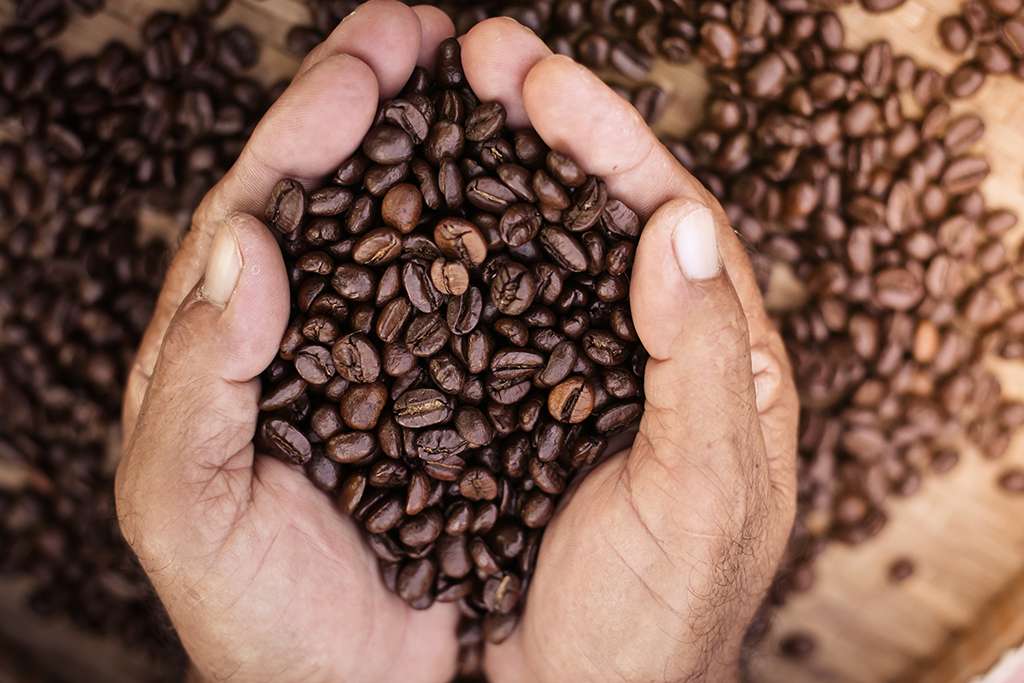
The Art of Coffee: Understanding the Roasting Process of Coffee Beans
Share
Introduction
Coffee is more than just a drink; it is an experience. Akin to an artist carefully selecting their palette, the roasting of coffee beans is a meticulous process that influences the very essence of your morning brew. This article will whisk you away on a journey into the heart of coffee roasting, revealing the subtle art and the science that happens from a green bean to the aromatic powerhouse that fills our cups.
How Are Coffee Beans Roasted?

The process is like baking. Just as a raw loaf transforms in the oven, coffee beans crack, expand, and brown as they absorb heat. During roasting, the beans shed their chaff - a paper-like substance - and undergo two significant "cracks." The first crack is an audible cue that beans have reached a light roast, while the second indicates a darker, fuller roast.
By manipulating the roasting time, coffee artisans control the flavor profile, balancing acidity, sweetness, and body, ensuring every sip is a symphony of taste.
Coffee Roasting Basics - Developing Flavor
The magic of coffee roasting is not just in the transformation of color or size. It is in the orchestration of flavors. As beans roast, a complex interplay of chemical reactions occurs, which coaxes out the flavors locked within.
At the heart of this flavor development is the Maillard reaction, a scientific phenomenon most associated with browning food. As amino acids and sugars within the coffee beans react under heat, they produce myriad compounds responsible for the toasted, caramel-like flavors in the coffee. This reaction is the bridge between the grassy taste of a raw bean and the rich flavors of a roast.
Another critical reaction is caramelization. As sugars within the beans break down under heat, they form simpler sugar structures that lend a sweet profile to the roast.
However, roasting is a delicate balance. Roast for too long, and the beans might develop a burnt or overly bitter taste due to the breakdown of chlorogenic acid compounds. On the other side, under-roasting can result in an acidic or sour profile.
By mastering these reactions, roasters can bring out notes of fruit, chocolate, nuts, or even floral hints, crafting a diverse range of flavor profiles for coffee enthusiasts.
A Coffee Roast Guide
When you gaze at a selection of roasted beans, their spectrum of colors is not just aesthetic; it is a guide to flavor, aroma, and body. Here is a brief overview:
- Light Roast: Often a cinnamon or honey hue, these beans are roasted just beyond the first crack. This keeps most of the coffee's original characteristics and boasts a higher acidity. Common flavors include toasted grain, fruit, and a pronounced brightness.
- Medium Roast: Sporting a medium brown color, these beans are roasted to the end of the first crack but before the onset of the second. They strike a balance between the bean's inherent flavors and those introduced by the roasting process. One might detect notes of caramel, nuts, and even slightly chocolate.
- Medium-Dark Roast: Progressing to a richer brown, these beans have experienced the beginning of the second crack. Here, spicy, or chocolatey undertones prevail, complemented by a fuller body and a bolder flavor profile.
- Dark Roast: These beans, ranging from a deep brown to almost black, are roasted well into or beyond the second crack. They have low acidity, a heavy body, and a flavor profile dominated by the roasting process itself—think smokey, even tar-like notes.
Each roast level aligns with certain coffee preparations. For instance, light roasts often shine in pour-over methods, while dark roasts are often preferred for robust espressos.
Roasting Techniques, Temperatures, and Methods
Roasting coffee is an amalgamation of art and science, and the method chosen can change the final cup's flavor and aroma. Here are the prevalent roasting techniques:
- Drum Roasting: A classic and widespread method, drum roasting involves tumbling coffee beans in a rotating drum, heated either directly by fire or indirectly through conduction. It imparts a smooth, well-rounded flavor to the beans, making it popular among specialty roasters.
- Air Roasting: Also known as fluid bed roasting, this method employs hot air to levitate and roast coffee beans. The result is a quick roast with even heat distribution, often leading to a brighter cup with pronounced acidity.
- Double Roasting: This involves roasting the same batch of beans twice – initially to a light level, and then to the desired darkness. This technique draws out layered flavors, marrying the profiles of light and dark roasts.
- Flash Roasting: Using high heat for a short duration, flash roasting captures a unique flavor profile – often keeping the coffee’s inherent qualities while introducing a touch of roast-driven notes.
In terms of temperature, roasting typically begins at around 200°C (392°F) and can go up to 230°C (446°F) or even higher, depending on the desired roast level. The first crack usually occurs at around 205°C (401°F), while the second crack is closer to 220°C (428°F). However, these are not strict markers, as factors like bean density, moisture content, and roasting equipment can influence the exact temperatures.
Expert roasters also pay keen attention to the rate of rise (RoR) – the speed at which temperature changes. A consistent RoR can significantly influence the development of flavors and ensure uniformity in the batch.
Conclusion
From the vibrant green of raw beans to the alluring aromas of a fresh roast, the journey of coffee through the roasting process is a captivating blend of art and science. Each step, from selecting the roast level to choosing a specific technique, crafts a narrative that culminates in your cup. Every sip tells a story, a dance of flavors and aromas that reflect both the bean's origin and the roaster's touch.
As coffee enthusiasts or even casual drinkers, understanding this process enriches our appreciation. It reminds us that behind every great cup of coffee lies an intricate process of transformation, a testament to the passion and ability of those who dedicate themselves to this craft.
So, the next time you indulge in your morning brew or explore a new coffee blend, take a moment to ponder the journey those beans undertook. Celebrate the artistry, the science, and the sheer passion that elevates coffee from a simple drink to an experience.




